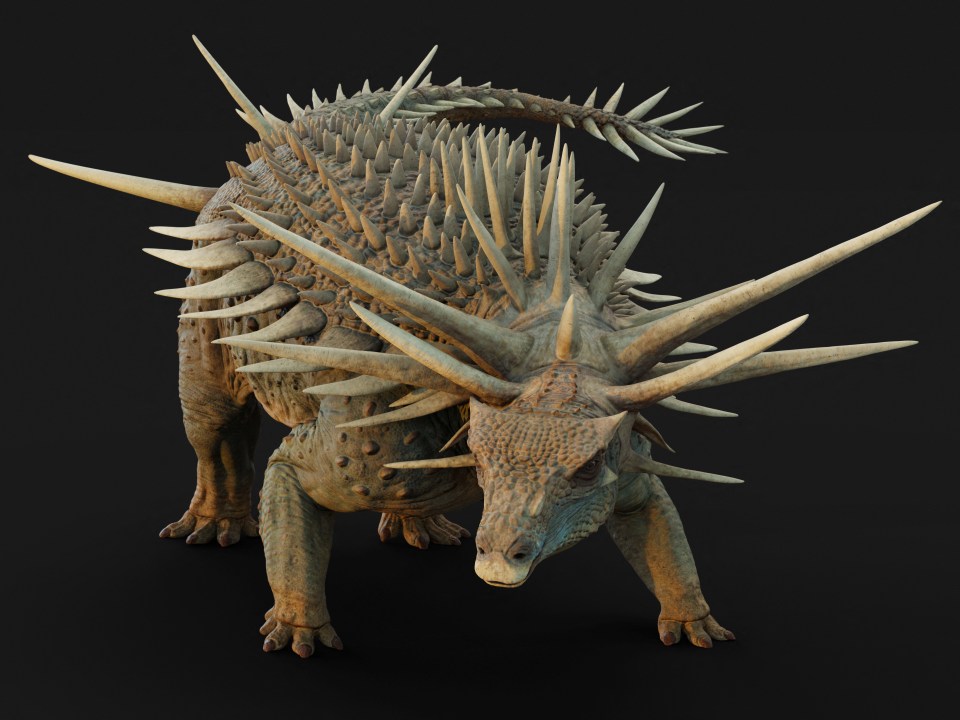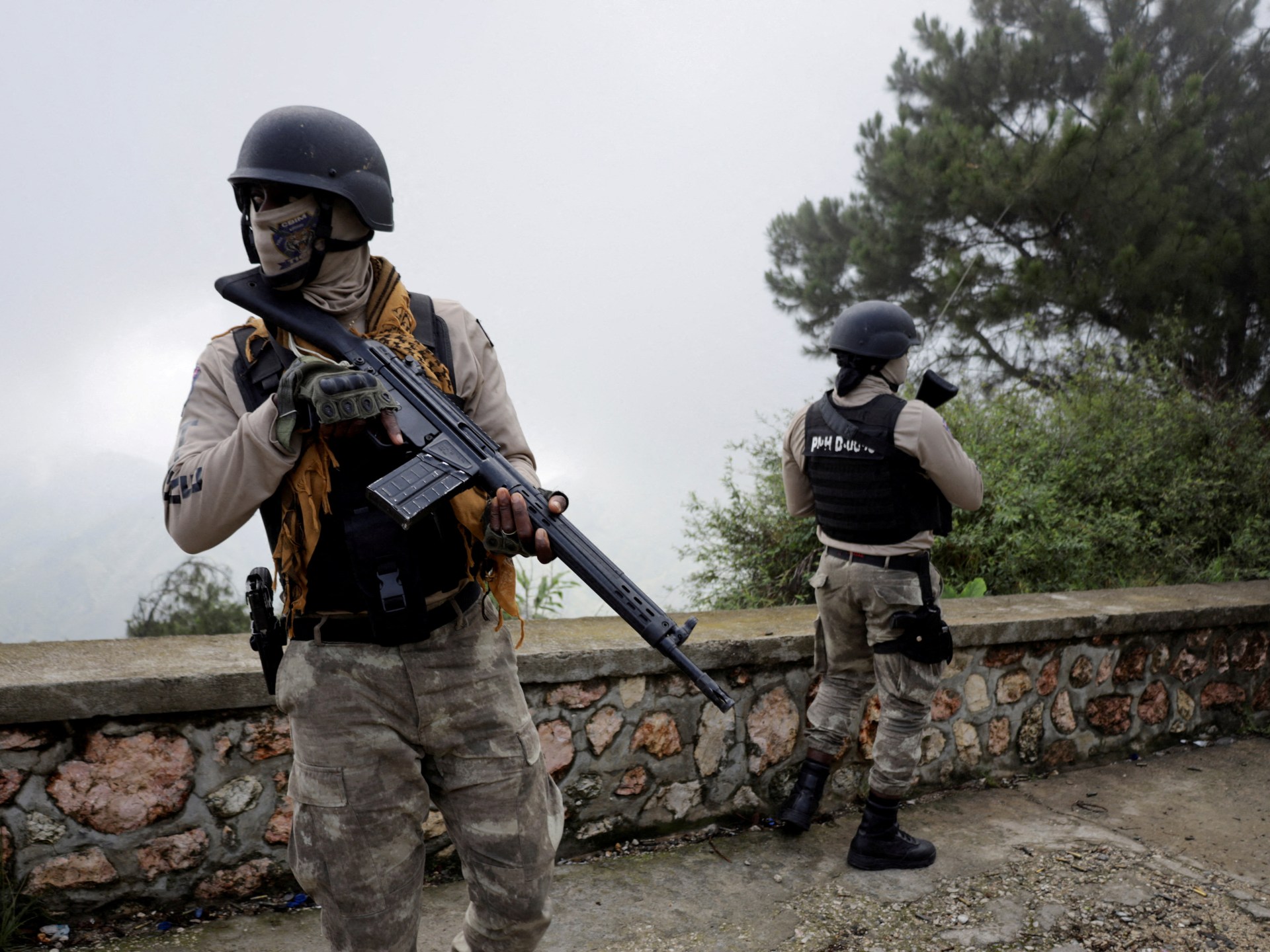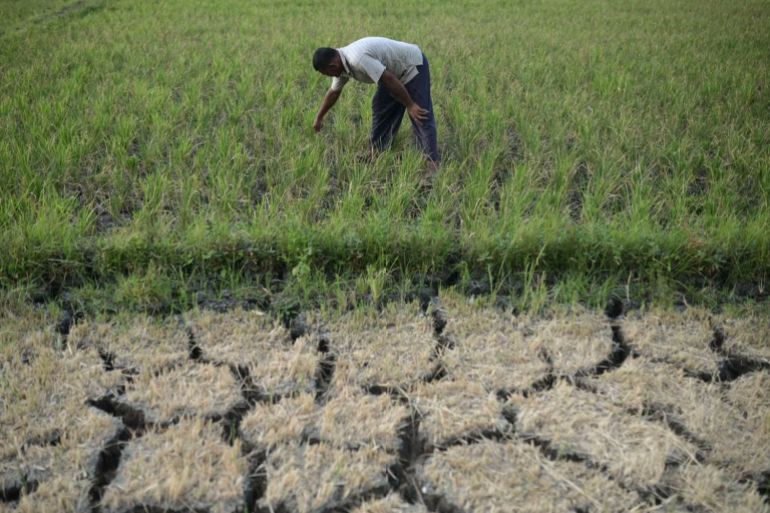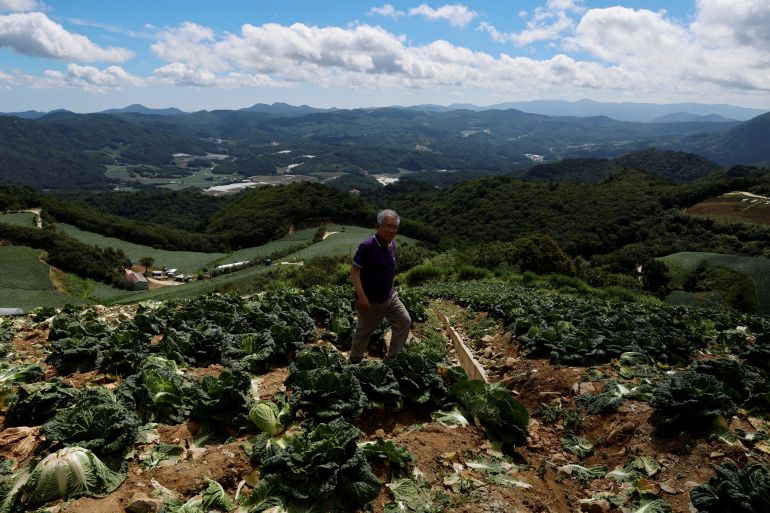‘Punk’ dinosaur with metre-long neck spikes discovered to protect it from fearsome predators
SCIENTISTS have discovered that a “punk rocker” dinosaur had metre-long spikes pointing out of its neck to protect it from predators.
The discovery came as analysis of fossils of the Spicomellus – the world’s oldest ankylosaur – was conducted by researchers, uncovering its elaborate armour.
The Spicomellus, referred to as one of the “strangest dinosaurs” to have ever lived, roamed the Earth around 165 million years ago and had bony spikes fused onto all of its ribs.
This ultra-rare feature has never been seen before in any other vertebrate species, living or extinct, according to scientists.
Ankylosaurs were a herbivorous group of dinosaurs known for their armoured, tank-like bodies and a club-shaped tail tip.
A team of palaeontologists recently discovered remains, helping to build on the original description of the animal, which was based on just one rib bone found near the town of Boulemane in Morocco, which was sold on to a researcher in 2019.
The new fossils revealed the dinosaur had spikes measuring 87 centimetres emerging from a bony collar around its neck.
These could have been even longer during the life of the Spicomellus, according to the research published in science journal Nature.
Professor Richard Butler, from the University of Birmingham and project co-lead, described the fossils as an “incredibly significant discovery.”
He said: “Spicomellus is one of the strangest dinosaurs that we’ve ever discovered.
“It’s utterly unlike any other found anywhere else in the world.
“I think it’s going to really capture the imagination of people around the world, and tell us a lot about the early evolution of the tank-like ankylosaurs.”
He also told the BBC that the dino was the “punk rocker” of its time, alluding to its spiky looks which resemble loyal punk rock fans who may don spiky hair.
Professor Susannah Maidment of Natural History Museum, London, and the University of Birmingham, who co-led the team of researchers said the “absolutely bizarre” fossils were changing how scientists believe the armoured dinosaurs evolved.
She said: “When we originally named spicomellus, there were doubts that it was an ankylosaur at all.
“Now, not only can we confirm beyond a doubt that this interpretation was correct, but Africa’s only known ankylosaur is far weirder than anyone imagined.”
She added: “Spicomellus had a diversity of plates and spikes extending from all over its body, including metre-long neck spikes, huge upwards-projecting spikes over the hips, and a whole range of long, blade-like spikes, pieces of armour made up of two long spikes, and plates down the shoulder.
“We’ve never seen anything like this in any animal before.”
Professor Maidment said that while it is likely the armour evolved initially for defence purposes, it was probably used later to attract mates and show off to rivals.
The discovery of the spicomellus species was made after Professor Maidment acquired a rib bone from a fossil dealer in Cambridge in 2019.
Why did the dinosaurs die out?
Here’s what you need to know…
- The dinosaur wipe-out was a sudden mass extinction event on Earth
- It wiped out roughly three-quarters of our planet’s plant and animal species around 66 million years ago
- This event marked the end of the Cretaceous period, and opened the Cenozoic Era, which we’re still in today
- Scientists generally believe that a massive comet or asteroid around 9 miles wide crashed into Earth, devastating the planet
- This impact is said to have sparked a lingering “impact winter”, severely harming plant life and the food chain that relied on it
- More recent research suggests that this impact “ignited” major volcanic activity, which also led to the wiping-out of life
- Some research has suggested that dinosaur numbers were already declining due to climate changes at the time
- But a study published in March 2019 claimed that dinosaurs were likely “thriving” before the extinction event
This comes after a new species of dog-sized dinosaurs was discovered.
The Maleriraptor kuttyi is thought to be one of the earliest killer dinosaurs in history.
The now-extinct dinosaur is believed to have lived some 220 million years ago – during the Triassic period.
The small but mighty beast could grow to a height of 3.2 feet and a length of 6.5 feet – about the size of a large-breed dog such as a Great Dane.
And the creature was one of the earliest known carnivorous dinosaurs, along with the rest of the Herrerasauria family.
Dr. Martín Ezcurra from the Argentina’s Natural Science museum said: “Herrerasaurs represent the oldest radiation of predatory dinosaurs.”
The fossilised dinosaur bones were discovered more than in Telangana, India, forty years ago.
But only now have scientists identified exactly what species these bones belonged to.
Herrerasauria fossils were previously found in South and North America.
But the new bombshell discovery has proved that the creatures roamed far more of the Earth than previously thought.







